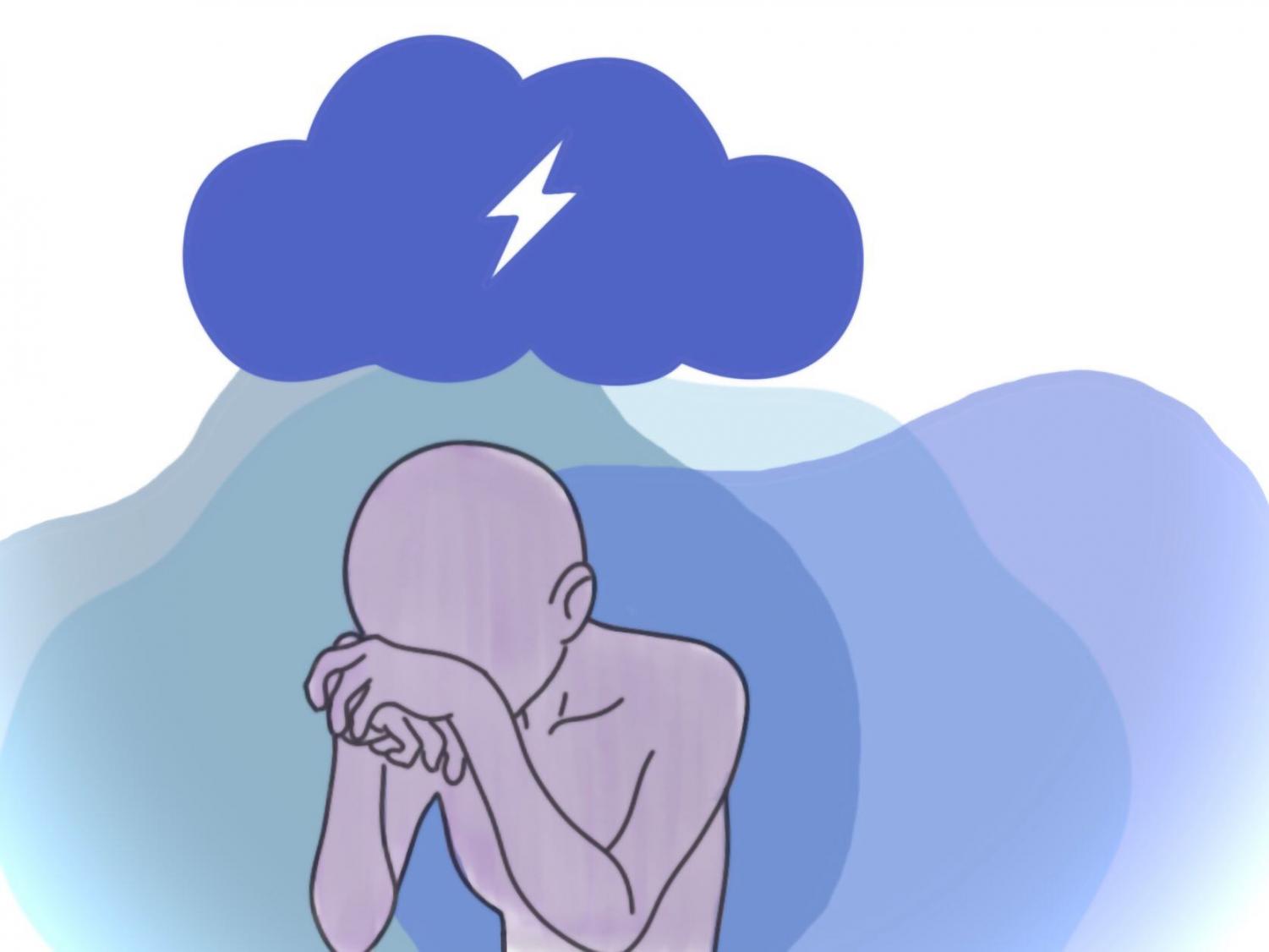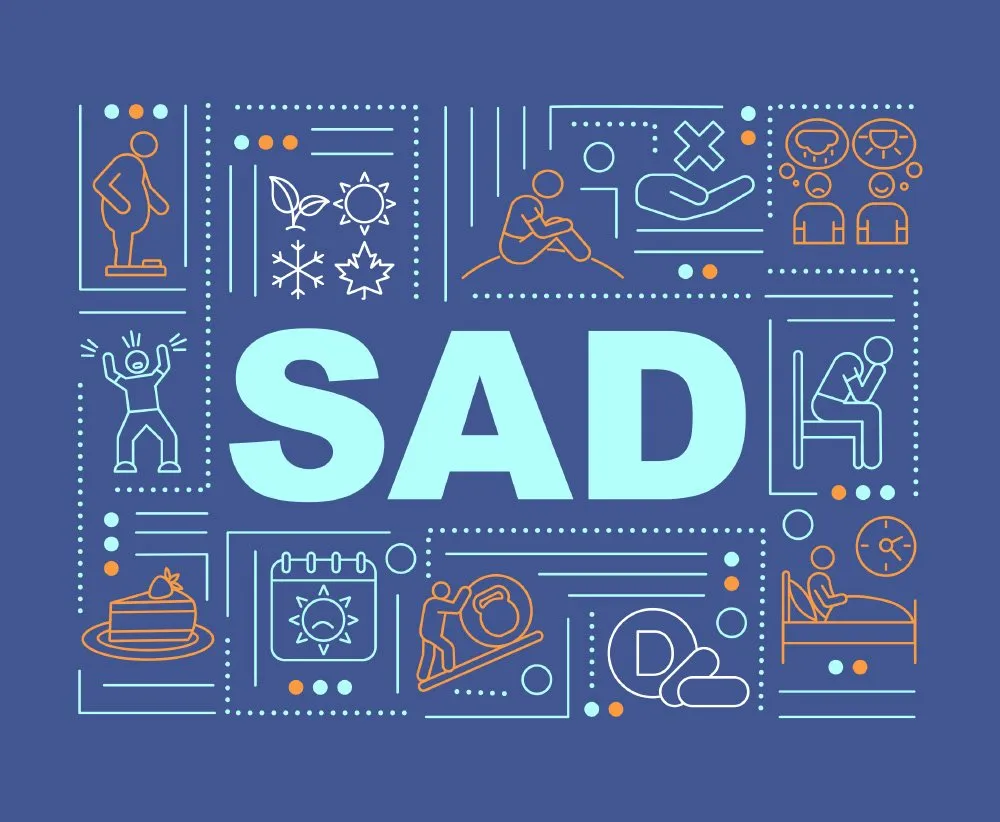As days shorten and darkness falls earlier, many people experience more than just the winter blues. Approximately 5% of U.S. adults suffer from Seasonal Affective Disorder (SAD), a serious form of depression triggered by seasonal changes. This condition significantly affects daily life, relationships, and well-being.
First described in 1984 by American psychiatrist Norman Rosenthal, SAD represents a recurring pattern of depression that typically begins in late fall or early winter and resolves during the brighter days of spring and summer.
The condition affects women more frequently than men and typically emerges during young adulthood, usually between ages 18 and 30. While most cases involve winter-onset depression, a less common variant called “summer SAD” or “reverse SAD” can occur during warmer months.
Understanding Seasonal Affective Disorder

Seasonal Affective Disorder is officially classified by the American Psychiatric Association as major depressive disorder with seasonal patterns. This classification underscores that SAD isn’t simply feeling sad about winter weather—it’s a genuine form of depression that follows predictable seasonal cycles.
The most common form, winter-pattern SAD, typically begins in late fall or early winter when daylight hours decrease significantly. Symptoms usually start mild and progressively worsen as the season advances, reaching peak severity during the darkest months of winter. As spring arrives and daylight hours increase, symptoms generally begin to resolve, often completely disappearing during summer months.
Summer-pattern SAD, while less common and less understood, follows the opposite pattern. Individuals with this variant experience depressive episodes during the spring and summer months, with symptoms improving during fall and winter. This reverse pattern affects fewer people but can be equally debilitating for those who experience it.
Recognizing the Symptoms
The symptoms of SAD encompass both typical depression indicators and season-specific manifestations. Common signs include persistent feelings of sadness or depression most of the day, nearly every day, along with a marked loss of interest in activities once enjoyed. Individuals frequently experience significant fatigue and low energy levels, even when getting adequate sleep.
Winter-Pattern SAD Symptoms:
Winter-onset SAD presents with distinctive characteristics that differentiate it from other forms of depression. Oversleeping becomes common, with individuals finding it extremely difficult to wake up in the morning despite sleeping longer than usual. Appetite changes typically involve intense cravings for carbohydrate-rich foods like sweets and breads, often leading to overeating and subsequent weight gain.
Additional Concerning Symptoms:
More severe symptoms can include feelings of hopelessness, worthlessness, or guilt. Some individuals may experience thoughts of death or suicide, which require immediate professional attention and safety assessment. Irritability and restlessness may also manifest, along with either extremely slow movements or difficulty sitting still.
Understanding the Causes

While researchers haven’t identified a single definitive cause for SAD, several interconnected factors likely contribute to its development. The primary trigger appears to be reduced sunlight exposure during shorter days, which can disrupt the body’s internal biological clock and affect crucial brain chemicals.
Biological Factors:
Decreased sunlight can lead to drops in serotonin levels, a neurotransmitter that significantly affects mood regulation. When serotonin levels fall, individuals become more susceptible to depression and related symptoms. Additionally, seasonal changes can disrupt melatonin production, the hormone responsible for regulating sleep-wake cycles, potentially contributing to sleep disturbances and mood changes.
Many individuals with winter-pattern SAD also show vitamin D deficiency, as reduced sunlight exposure limits the body’s natural vitamin D synthesis. This deficiency may compound mood-related symptoms and contribute to the severity of the condition.
Risk Factors:
Several factors increase the likelihood of developing SAD. Geographic location plays a significant role—individuals living farther from the equator, where winter daylight hours are more dramatically reduced, face a higher risk. Family history of depression, bipolar disorder, or SAD also increases susceptibility, suggesting genetic components to the condition.
Age and gender are additional risk factors, with young adults and women being disproportionately affected. Existing mental health conditions, particularly depression or bipolar disorder, can increase vulnerability to developing seasonal patterns of mood disturbance.
Treatment Options and Management
Effective treatment for SAD typically involves a combination of approaches tailored to individual needs and symptom severity. The three primary treatment modalities include light therapy, psychotherapy, and medication, often used in combination for optimal results.
Light Therapy (Phototherapy):
Light therapy represents one of the most effective and widely used treatments for SAD. This treatment involves exposure to bright artificial light using specialized lamps that emit significantly more illumination than typical indoor lighting. The general recommendation involves 30 to 60 minutes of daily exposure to bright light, typically in the morning.
Light therapy works by compensating for reduced natural sunlight exposure and helping to regulate circadian rhythms and neurotransmitter production. Many individuals begin to notice improvement within a few days to weeks of consistent use. Light therapy lamps are readily available at major retailers, making this treatment accessible for home use.
Psychotherapy:
Cognitive Behavioral Therapy (CBT) has been specifically adapted for SAD treatment, known as CBT-SAD. This therapeutic approach focuses on identifying and challenging negative thought patterns related to seasonal changes while developing more positive coping strategies. CBT-SAD typically involves group sessions conducted over six weeks, addressing both cognitive and behavioral aspects of the condition.
Behavioral activation, a component of CBT-SAD, helps individuals identify and schedule enjoyable activities to counteract the loss of interest and motivation characteristic of SAD. Research comparing CBT-SAD with light therapy found both treatments equally effective, though CBT’s benefits may last longer over time.
Medication:
Antidepressant medications, particularly selective serotonin reuptake inhibitors (SSRIs), can effectively treat SAD symptoms. These medications work by increasing serotonin availability in the brain, helping to improve mood and reduce depressive symptoms. Common SSRIs used for SAD include Prozac and Zoloft.
Bupropion (Wellbutrin) has received specific FDA approval for preventing seasonal depressive episodes when taken daily from fall through early spring. This medication belongs to a different class of antidepressants and has shown particular effectiveness for SAD treatment.
Vitamin D Supplementation:
Given the high prevalence of vitamin D deficiency among individuals with winter-pattern SAD, supplementation may help improve symptoms. While research results remain mixed, some studies suggest vitamin D can be as effective as light therapy for certain individuals. However, it’s essential to consult with healthcare providers before starting any supplementation regimen.
Self-Care and Prevention Strategies

Proactive self-care measures can significantly help manage SAD symptoms and may even prevent their onset in individuals with a history of the condition. Since SAD follows predictable patterns, individuals can implement prevention strategies before symptoms typically begin.
Lifestyle Modifications:
Regular outdoor exposure, even during cloudy days, can provide beneficial light exposure and fresh air. Daily walks, regardless of weather conditions, offer multiple benefits, including light exposure, physical activity, and a change of scenery. Maintaining consistent sleep schedules helps regulate circadian rhythms and prevent the oversleeping tendency common in SAD.
Physical activity plays a crucial role in managing symptoms. Regular exercise, whether through structured workouts, group fitness classes, or simply moving the body daily, provides both physical and mental health benefits. Group activities offer the additional advantage of social interaction, which helps combat the isolation tendency associated with SAD.
Social and Planning Strategies:
Maintaining social connections becomes particularly important during vulnerable seasons. Informing family and friends about how seasonal changes affect mood allows them to provide support and accountability. Planning enjoyable activities and committing to these plans helps prevent the tendency to withdraw and cancel social engagements when symptoms begin.
Creating structured routines and maintaining regular meal times can provide stability during periods when motivation and energy levels fluctuate. Focusing on nutrition, particularly ensuring adequate intake of mood-supporting nutrients, may also contribute to well-being during challenging seasons.

